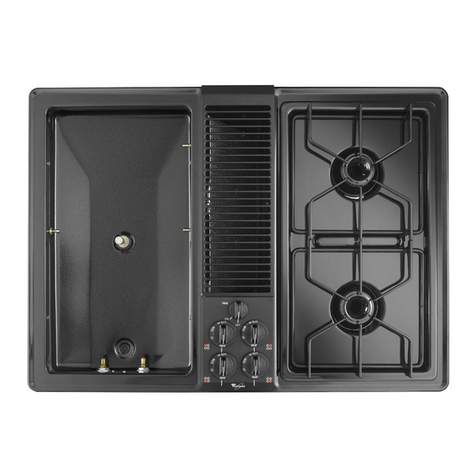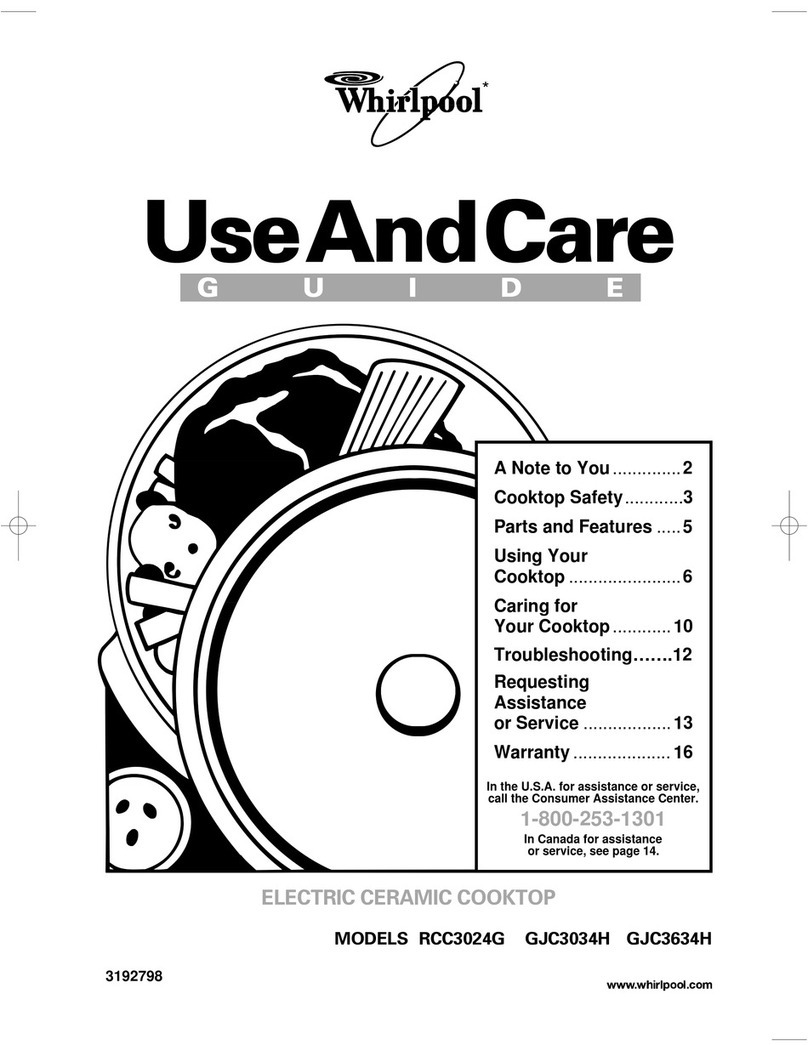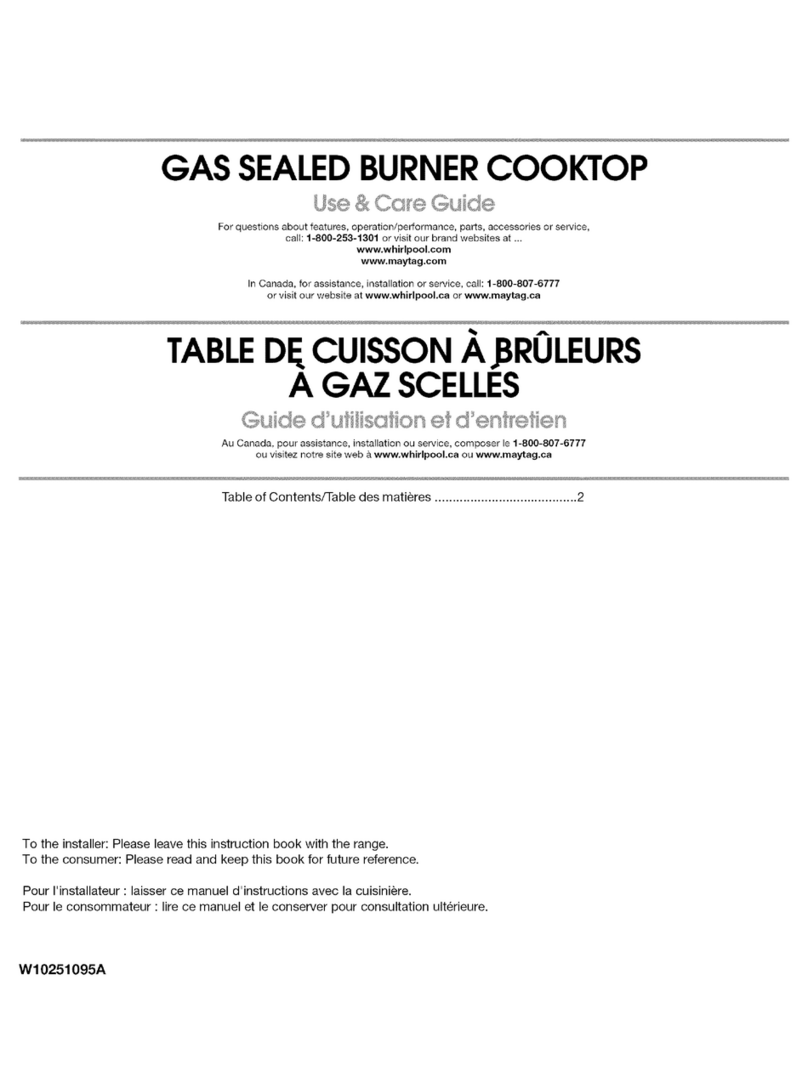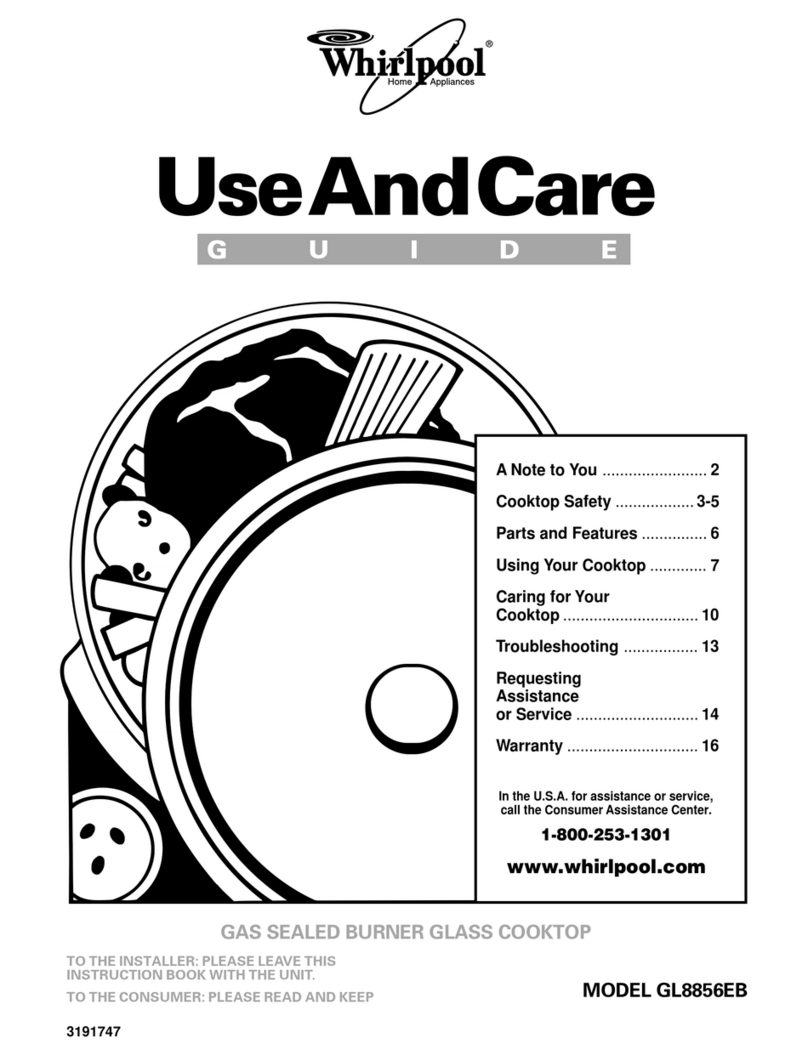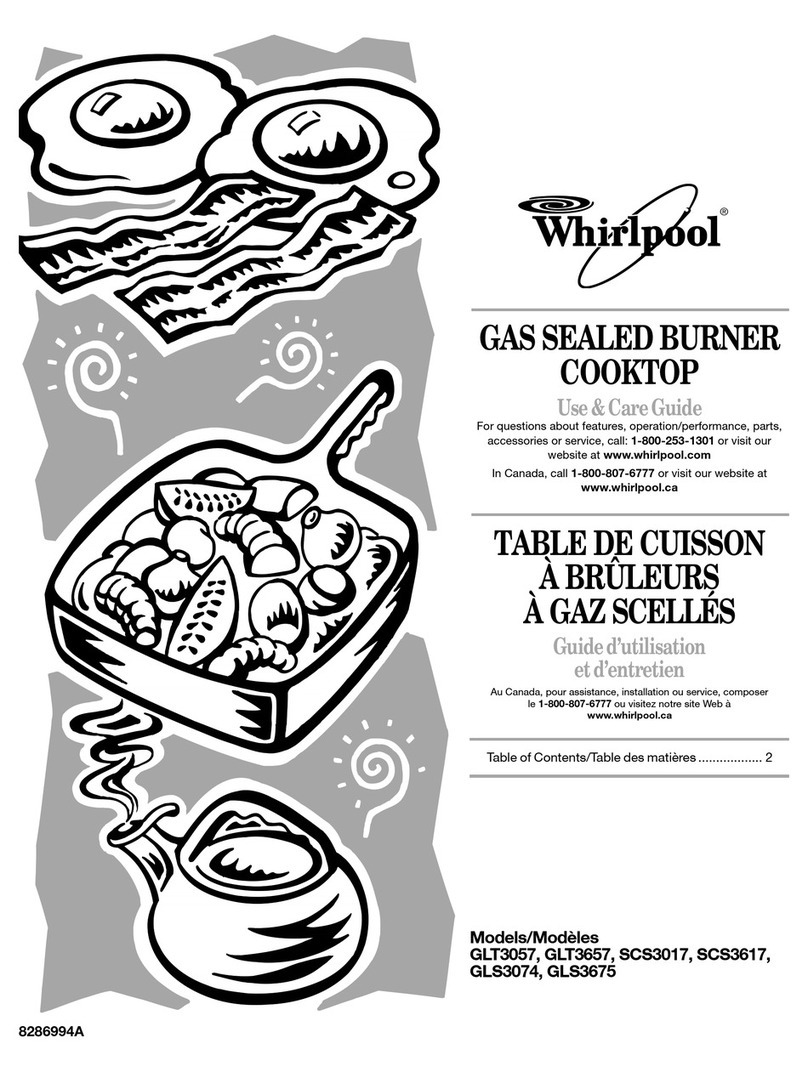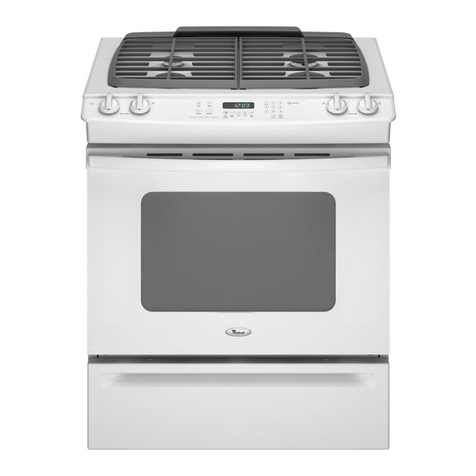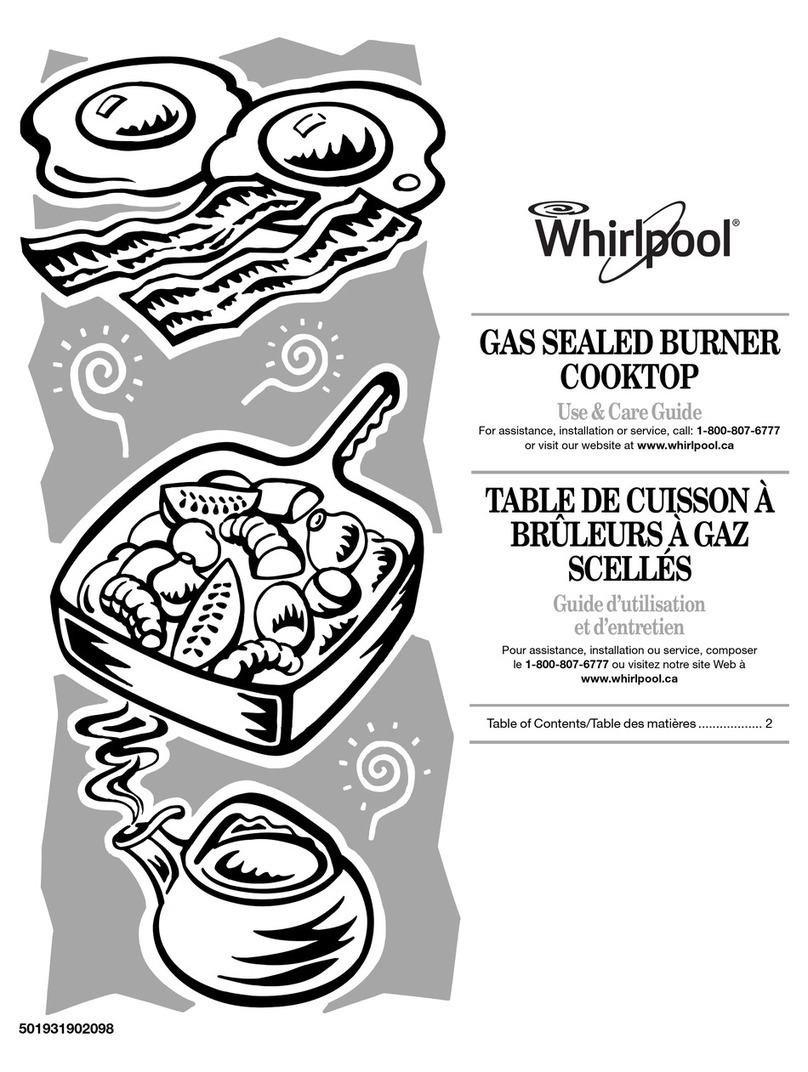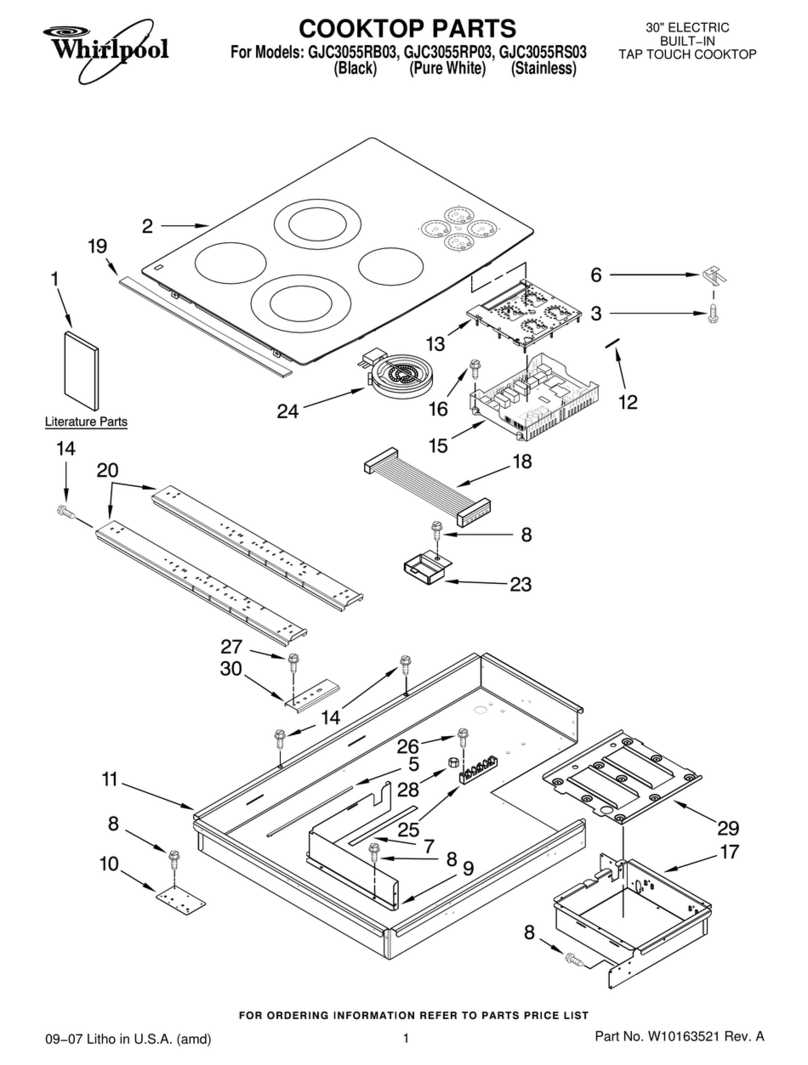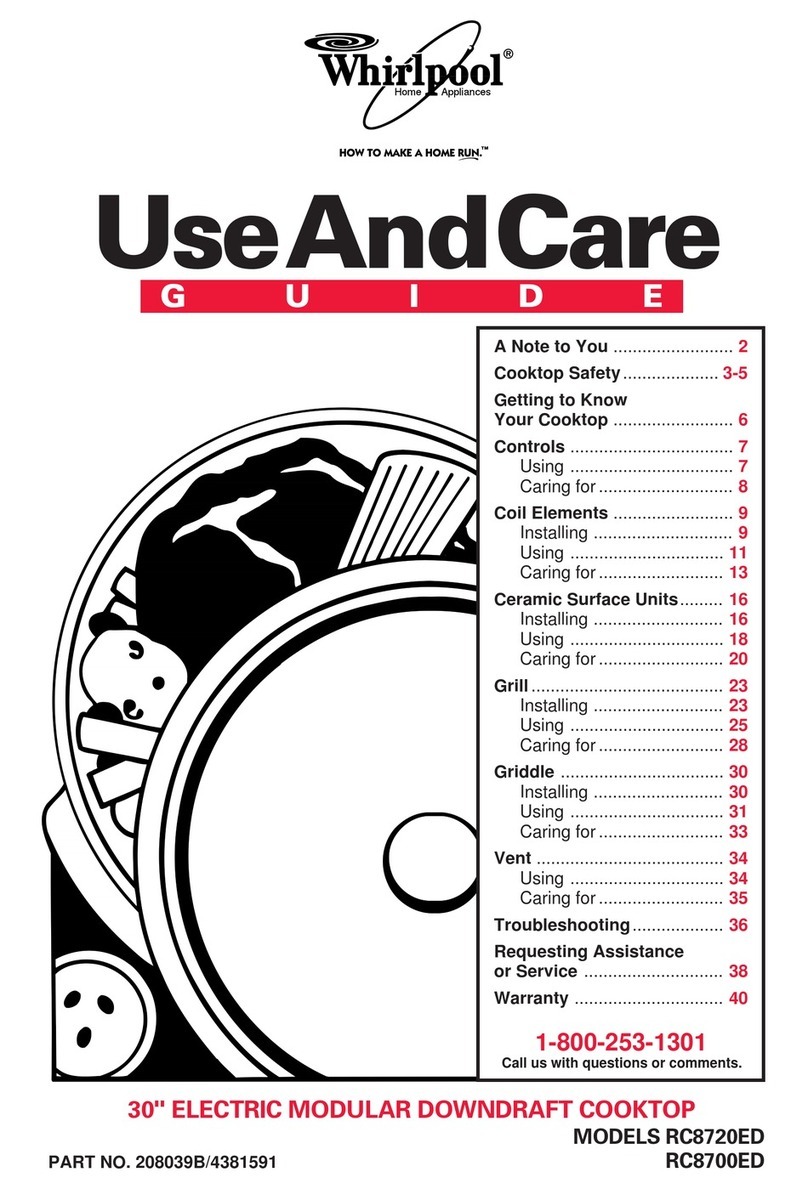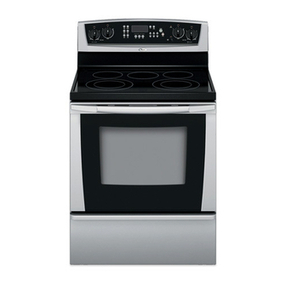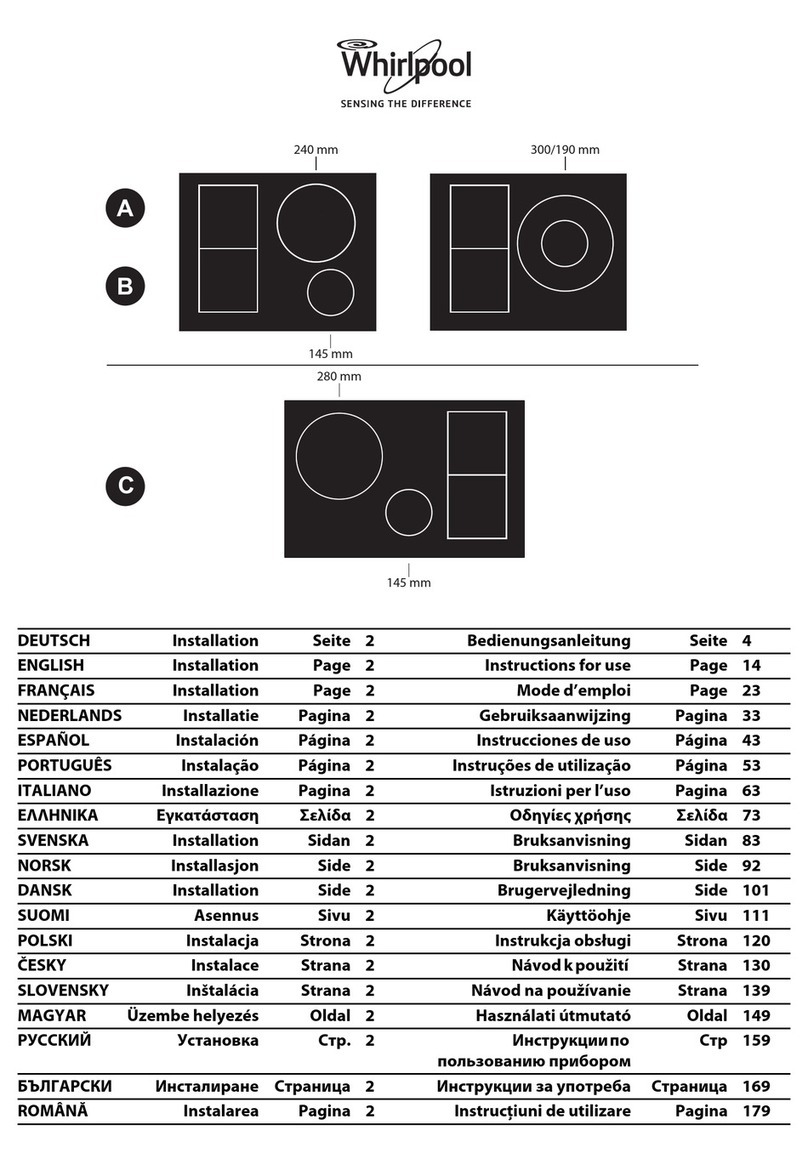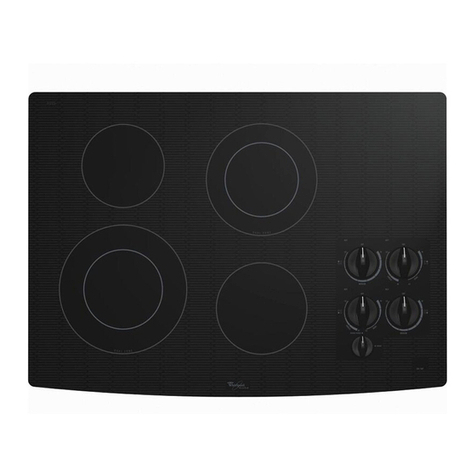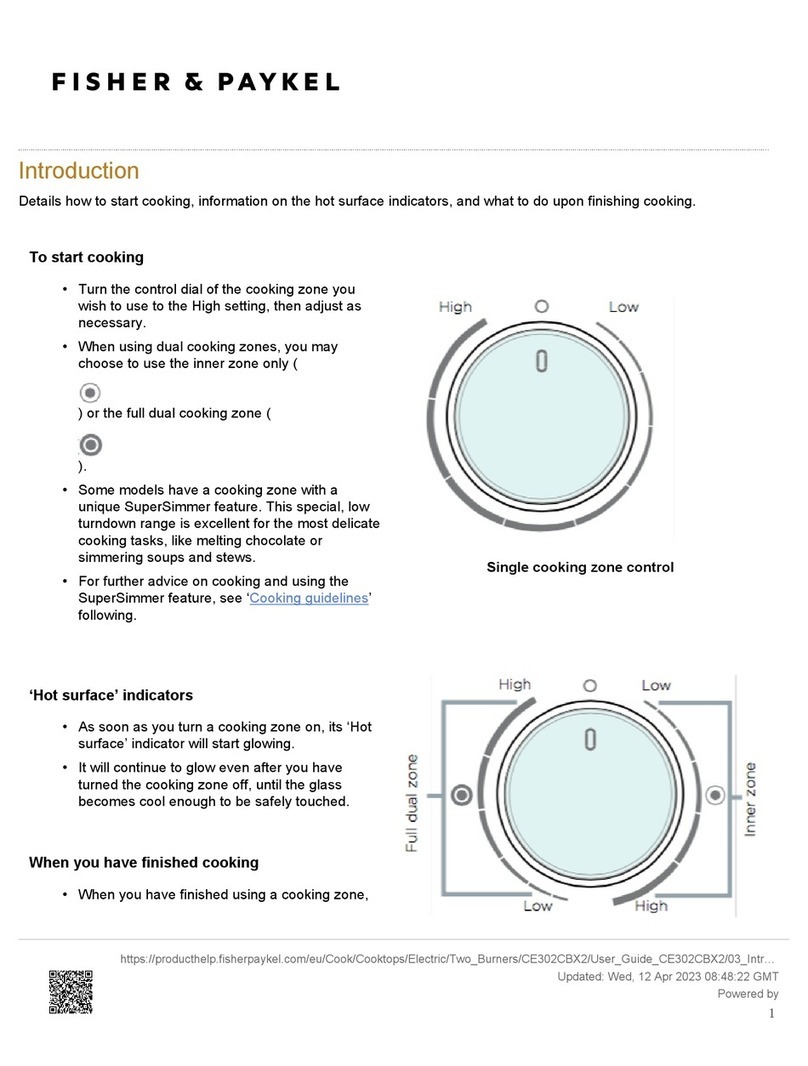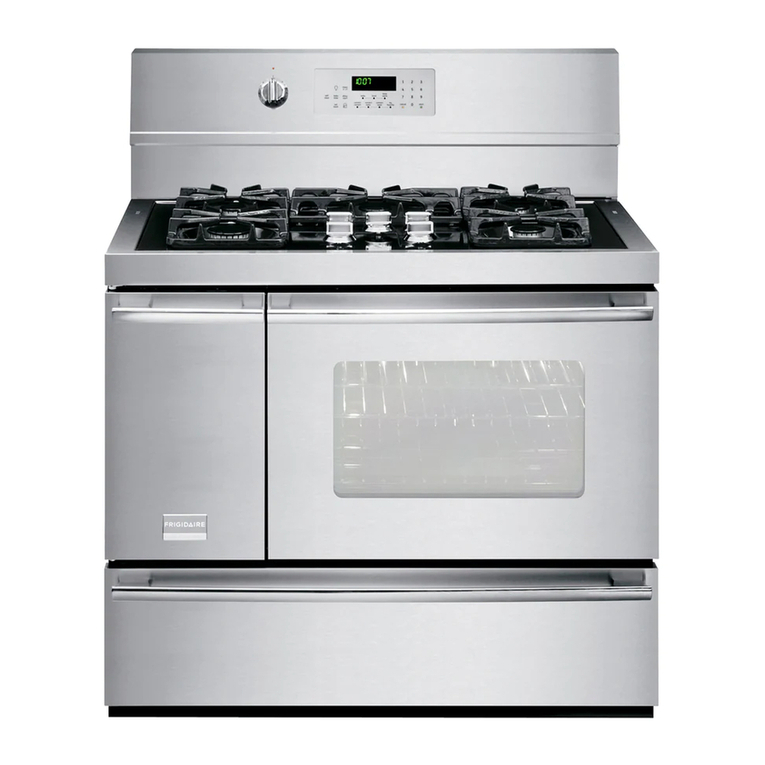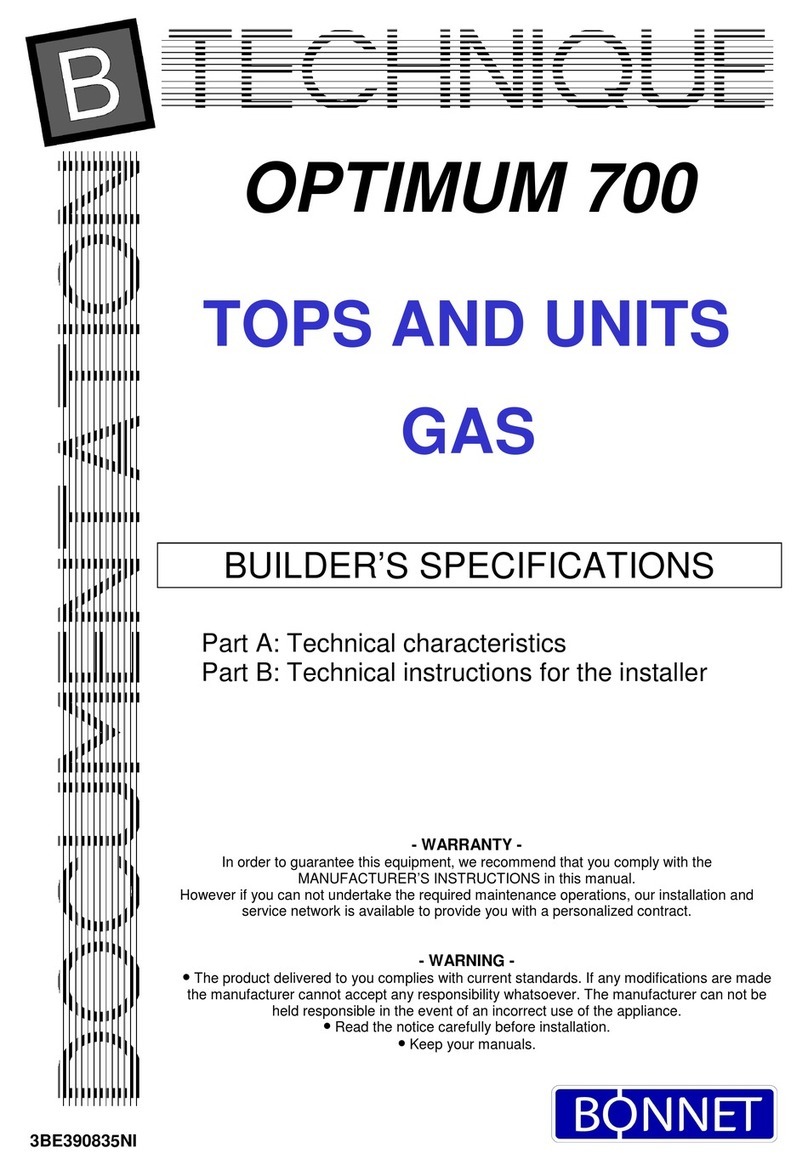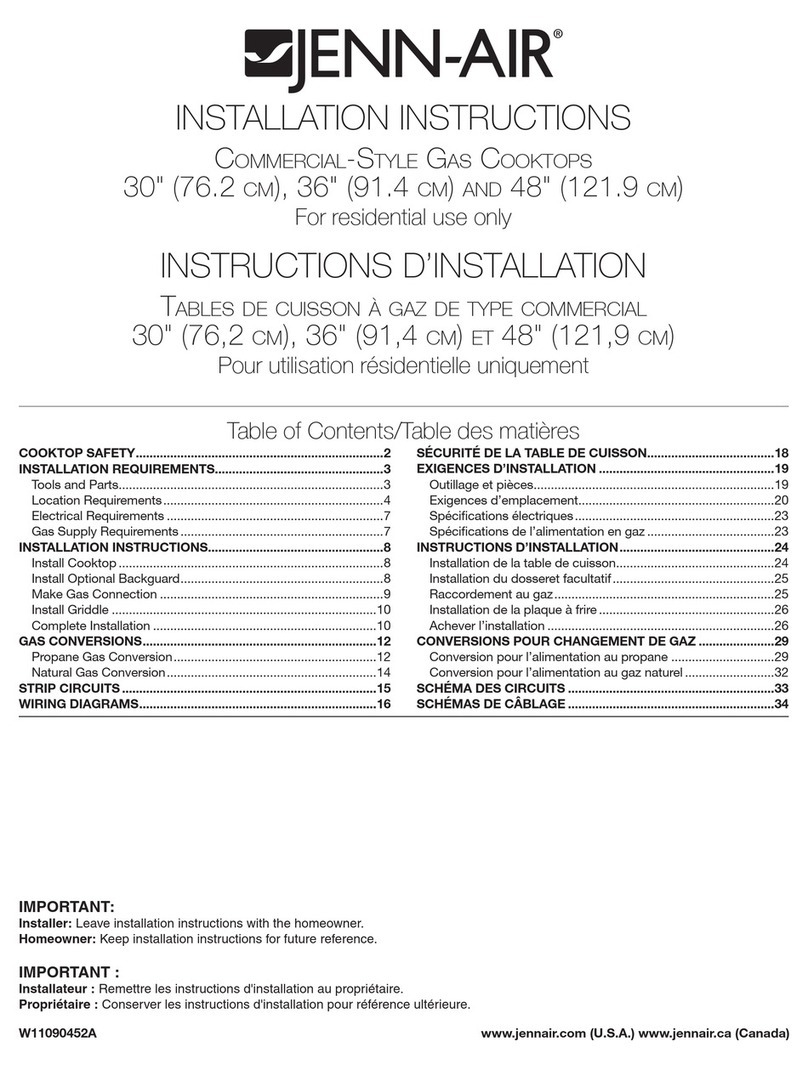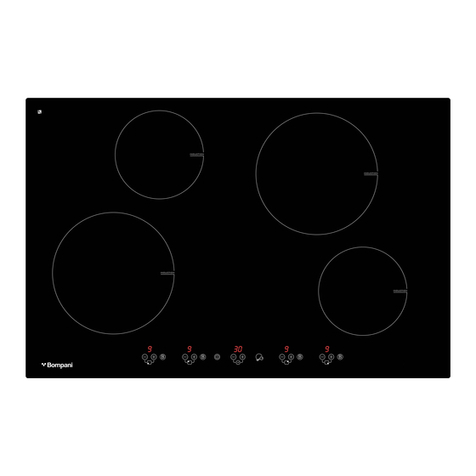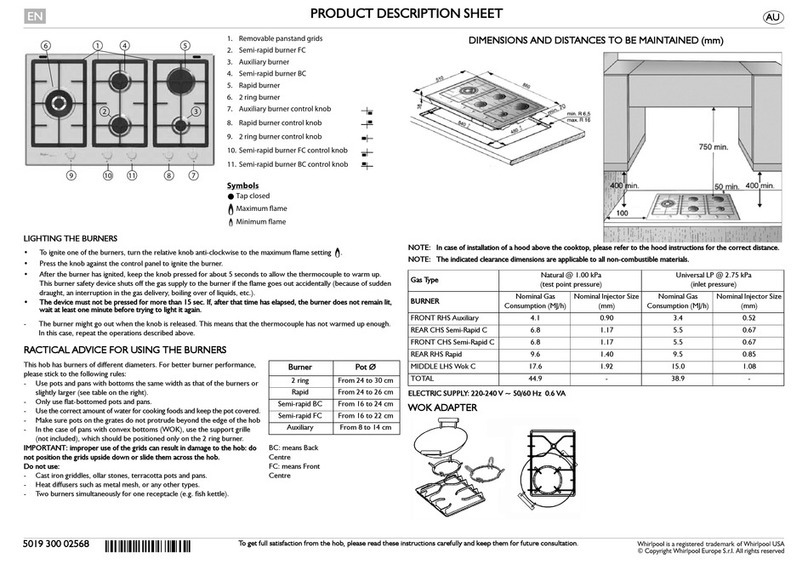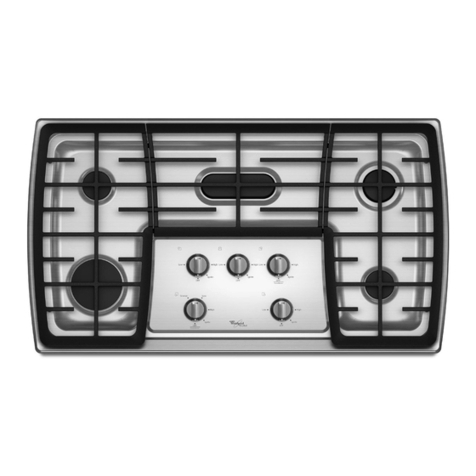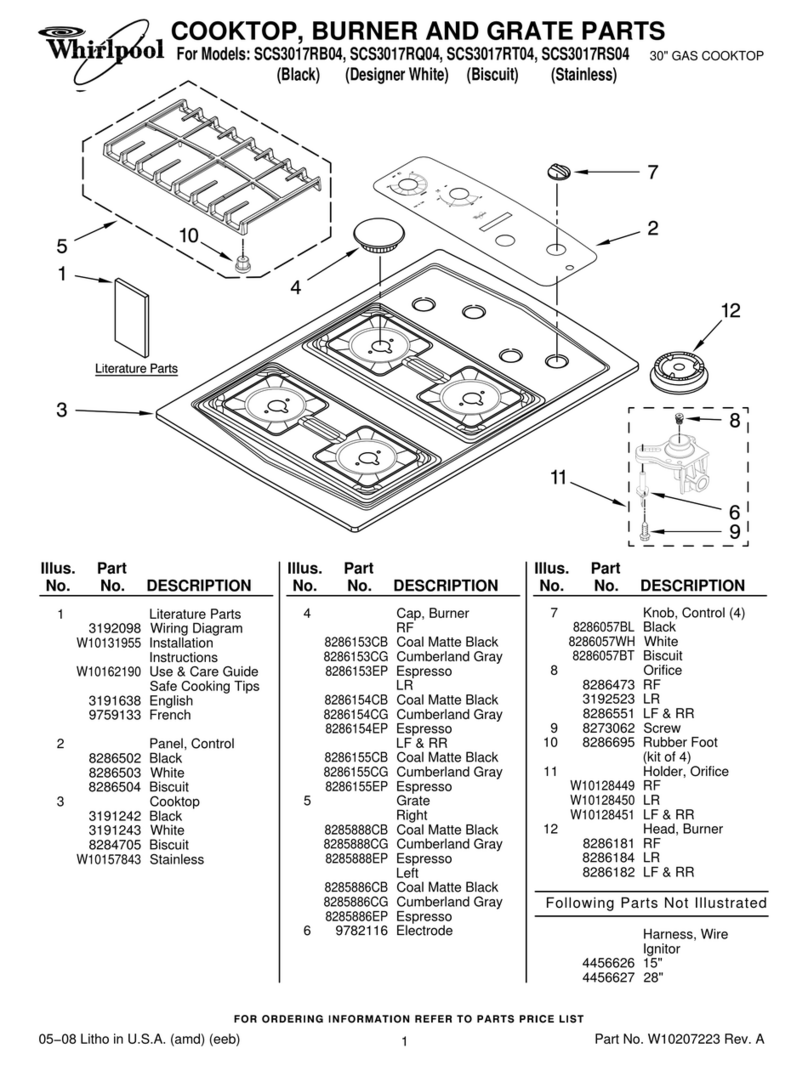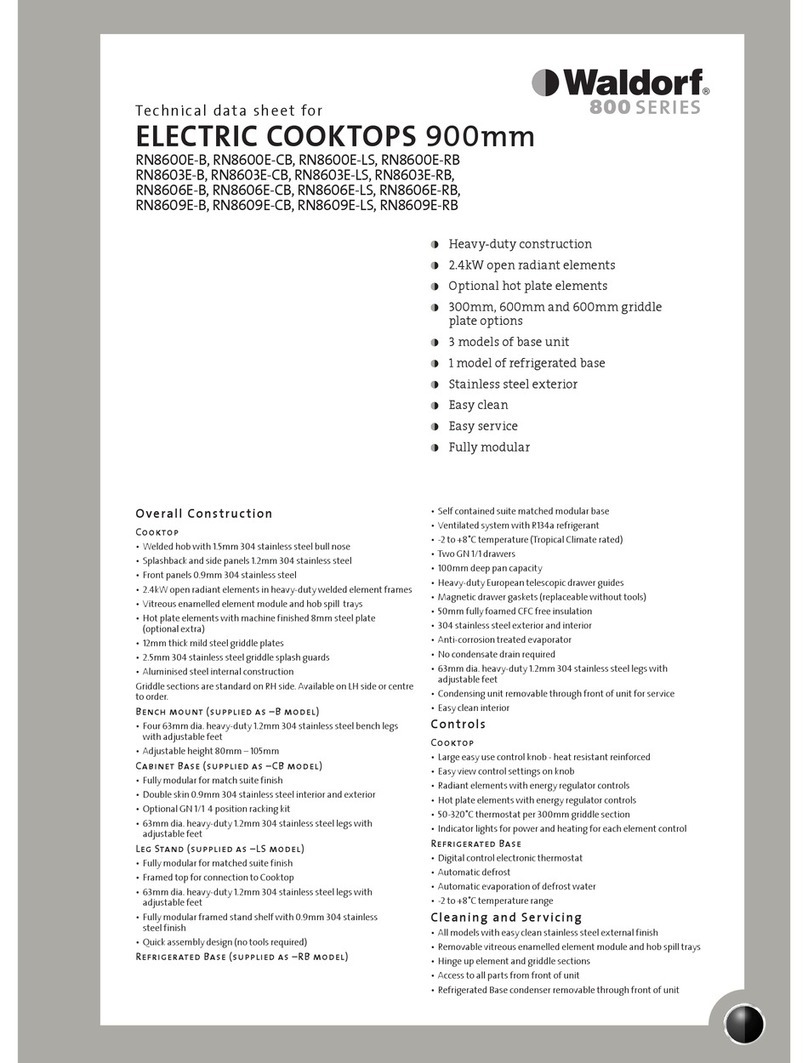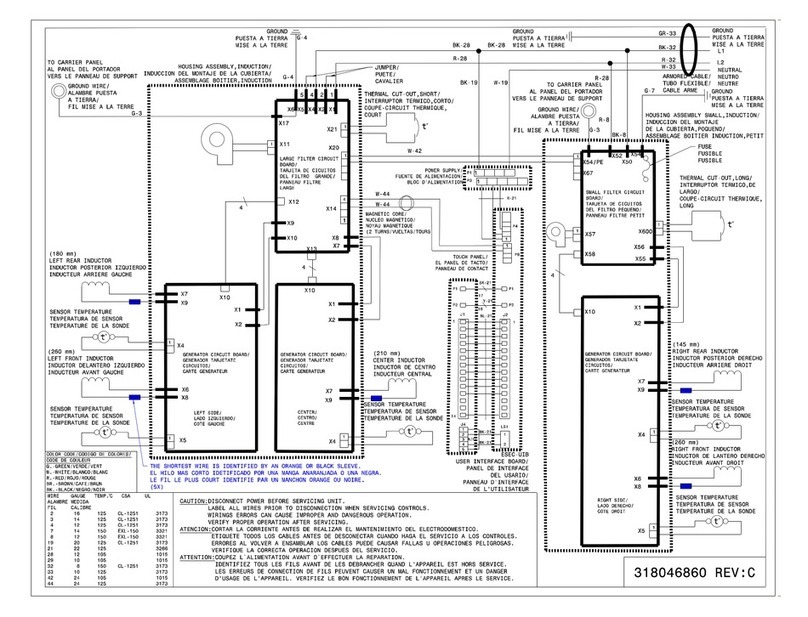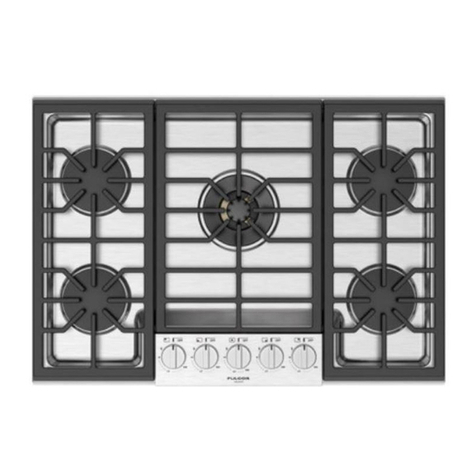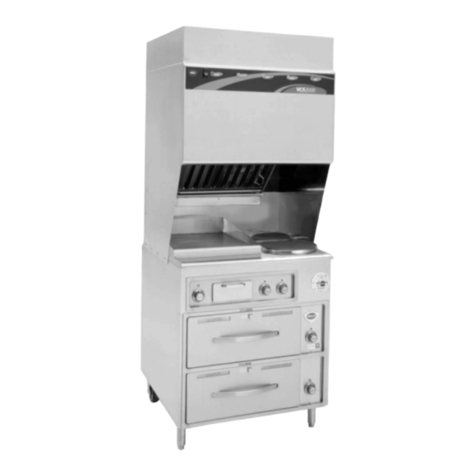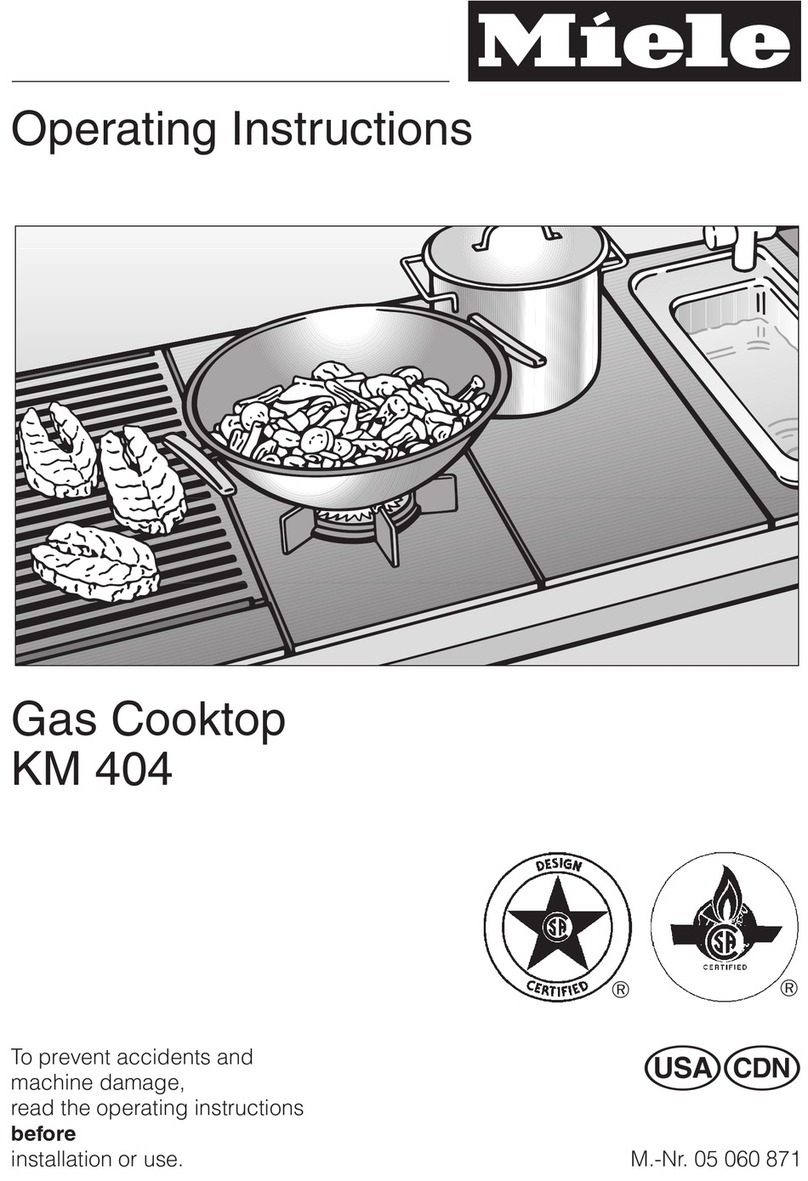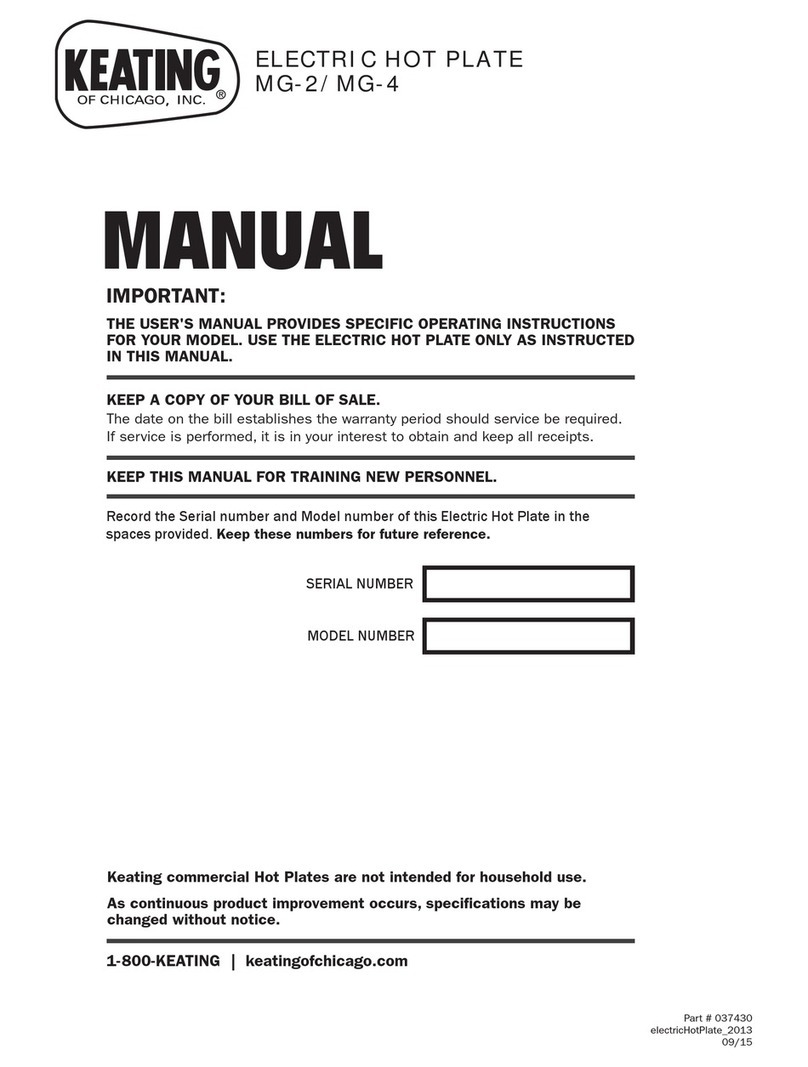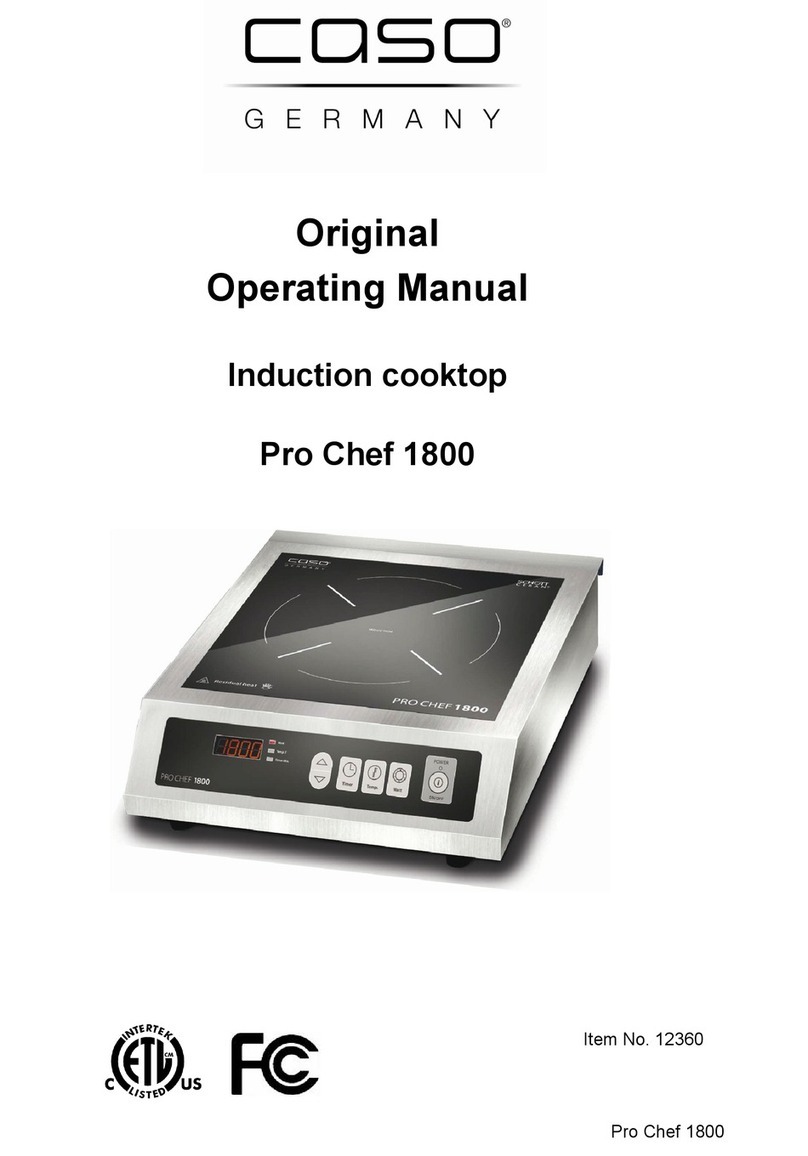Until you get used to the aettinge, use the
following as a guide.
For best results,
start
cooking at the high setting; then
turn
the control
knob down to continue cooking.
SElTlNG
RECOMMENDED USE
LITE
l To light the burner. After the
burner lights, turn control back to
a desired setting to stop the
clicking of the ignitor.
HI
l To start foods cooking.
l To bring liquids to a boil.
MED
l To hold a rapid boil.
l To fry chicken or pancakes.
l For gravy, pudding and icing.
l To cook large amounts of
vegetables.
LOW
l To keep food warm until ready to
serve.
NOTE:
Do not cook with the control in the LITE
position.
In case of a prolonged power
failure
Surface burners can be manually lighted.
Hold
a
lit match near a burner and
turn
the control knob
to the LITE position.
After the burner lights,
turn
the control knob to the desired setting.
Burn, Fire, Explosion and
Product Damage Hazard
l Burner flame should not extend beyond the
edge of the cooling utensil. The flame can
burn you and cause poor cooking results.
l Be sure all control knobs are turned to OFF
when you are not cooking. Someone could
be burned or a fire could start if a burner is
accidentally left ON.
l If the flame should go out while cooking, or
if there is a strong gas odor, turn the
burners OFF. Wait five minutes for the gas
odor to disappear before relighting burner.
lf gas odor is still present, see safety note
on page 3. Failure to follow these precau-
tions could resutt in explosion or fire.
l Do not leave an empty utensil, or one
which has boiled dry, on
a
hot surface
burner. The utensil can overheat and may
damage the utensil or cooking product.
Cookware tips
There is no one brand of cooking utensil that is
best for all people. Knowing something about pan
materials and construction will help you select the
correct cooking utensils for your needs.
l
NOTE: For beat reautta and greater fuel
efficiency,
use only flat-bottomed utensils that
make good contact with the surface burners.
Utensils with rounded, warped, ridged (porce-
lain enamel-ware) or dented bottoms could
cause severe overheating, which damages the
utensil and/or surface burner.
Woks, canners and teakettles with flat
bottoms suitable for use on your cooktop are
now available in most stores that sell
housewares.
l
The pan
should have straight sides and a tight-
fitting lid.
l
Choone medium to heavy gauge
(thickness)
pans that are fairly lightweight.
l
The pan material
(metal or glass) affects how
fast heat transfers from the surface burner
through the pan material and how evenly heat
spreads over the pan bottom, Choose pans that
provide the best cooking results.
l
Handles
should be made of a sturdy, heat-
resistant material and be securely attached to
the pan.
l
Pane
should be easy to clean. Check to be
sure there are no crevices, rough edges or
areas where food might collect.
l
Be sure pane
do not tip, whether they are full
or empty.
l
Use utensils
only as they were intended to be
used. Follow pan instructions. This is very
important for glass cookware because some
should be used only in the oven. Other pans
are marked as flameware and may be used on
the surface burners.
8

